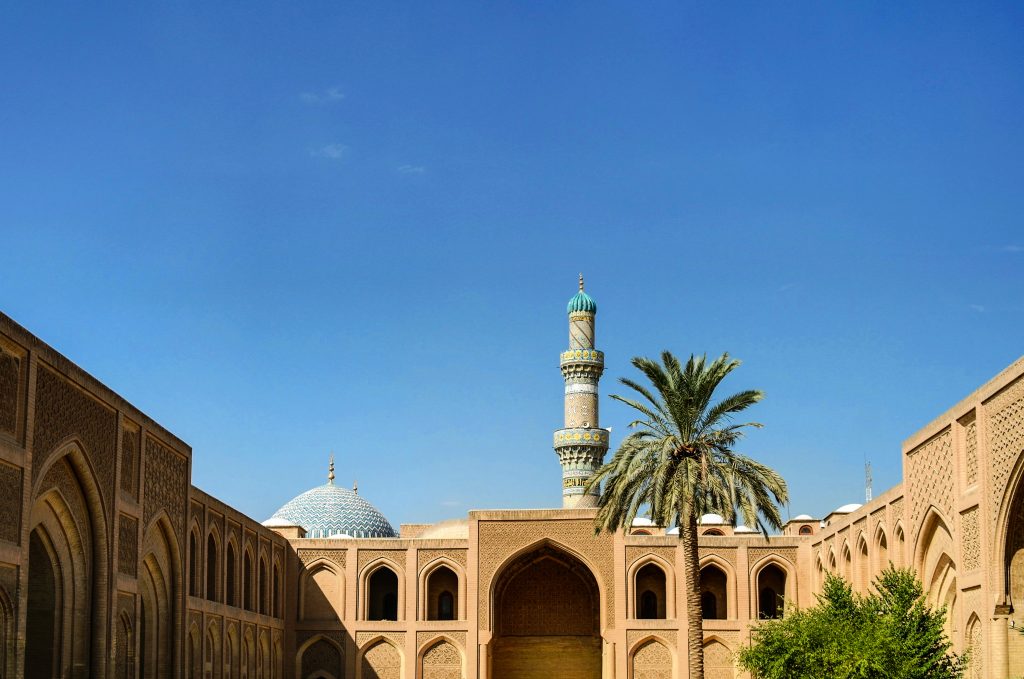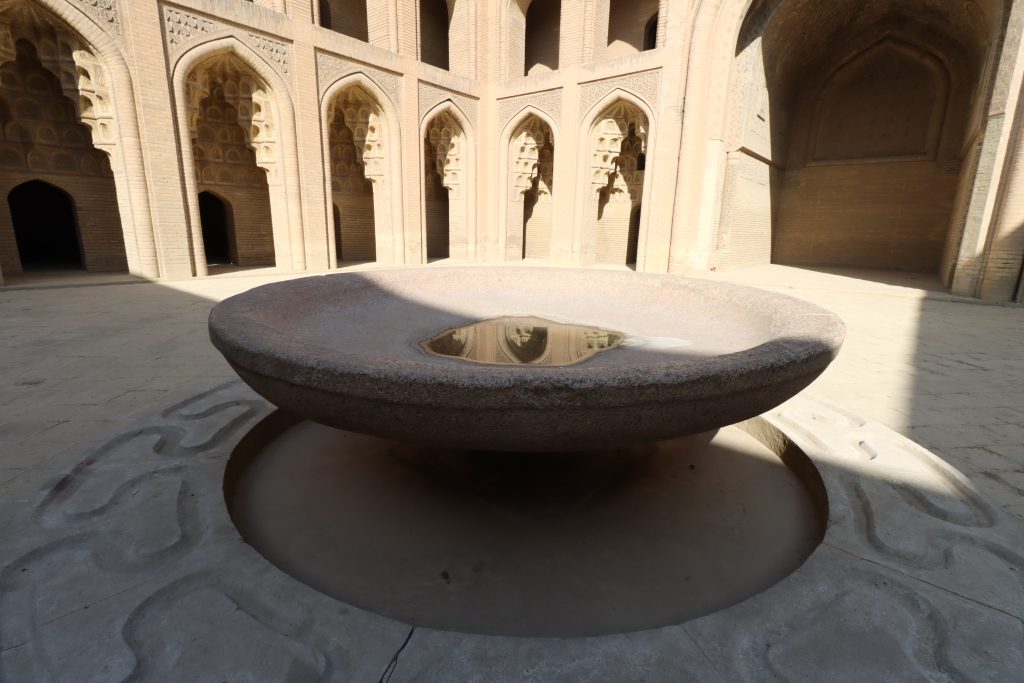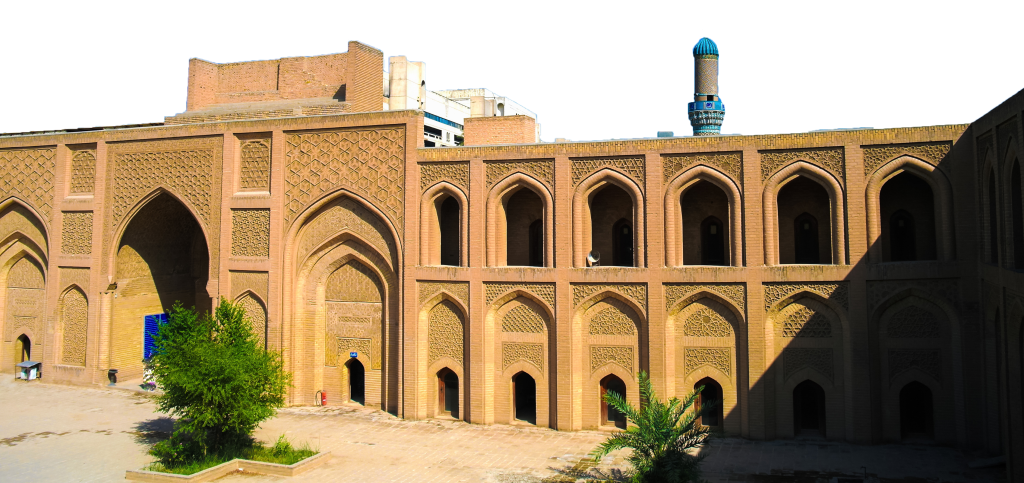The Mustansiriya Madrassah, named after its founder, the Abbasid Caliph Al-Mustansir Billah and built in 1233, is one of the oldest universities in the world. The madrasah is located on the left bank of the Tigris in Baghdad, which was considered as the most important intellectual hub of the world at that time.
The complex included four Iwans, or lecture halls, specializing in the study of the Qur’an on sunnah, a very large and important library, and several sections devoted to the study of medicine and the pharmacopeia of the natural sciences, as well as many outbuildings. Each Iwan was devoted to the teaching of the law of each of the four Sunni madhhabs: the Hanafi, common in the eastern regions of Persia, current Afghanistan, and today’s Russian Turkestan (then part of greater Khorasan); the Maliki, in the Maghreb and Andalusia, with ramifications in Alexandria (Iskandariyya) and Sicily, as well as the island of Crete; the Sciafeiti, mostly Syria, Iraq, and the western Iran current; the Hanbalites, strong mainly in Baghdad, Damascus, Cairo, Rayon and Shiraz.
The great medieval Islamic university taught Quranic sciences, law, the tradition of the Prophet, Arabic, medicine, and mathematics among many other fields. The founder who was known to be pious and honest chose the most eminent and distinguished teachers for the school. The students entered the Mustansiriya by competitive examination and, once their studies were completed, they had access to the most brilliant positions, such as viziers, diplomats, magistrates or professors.




